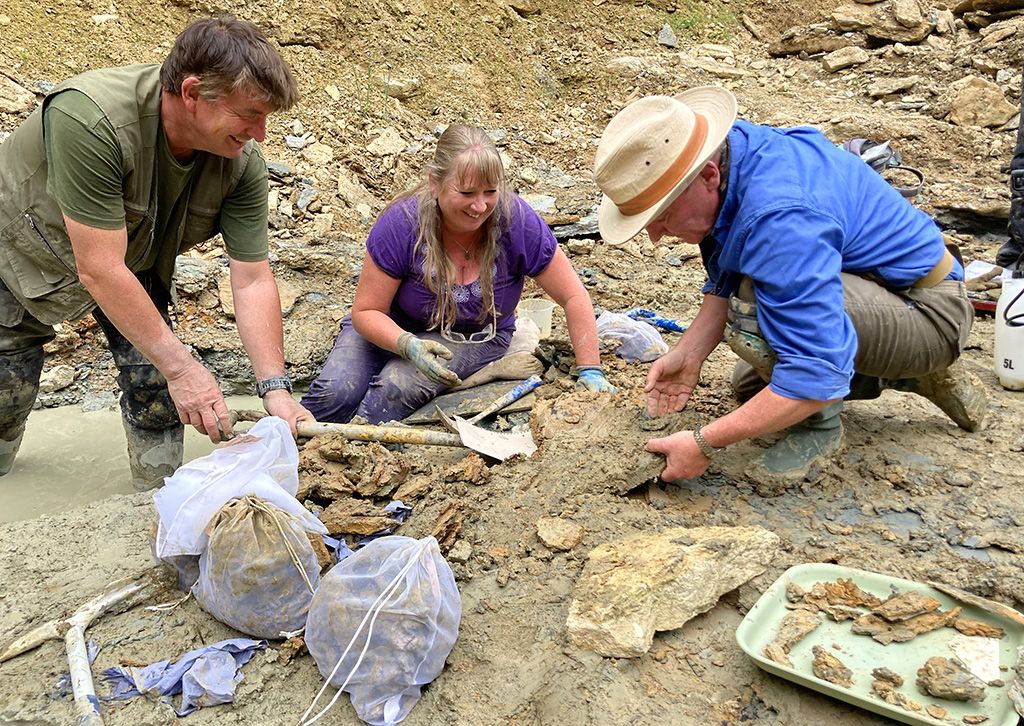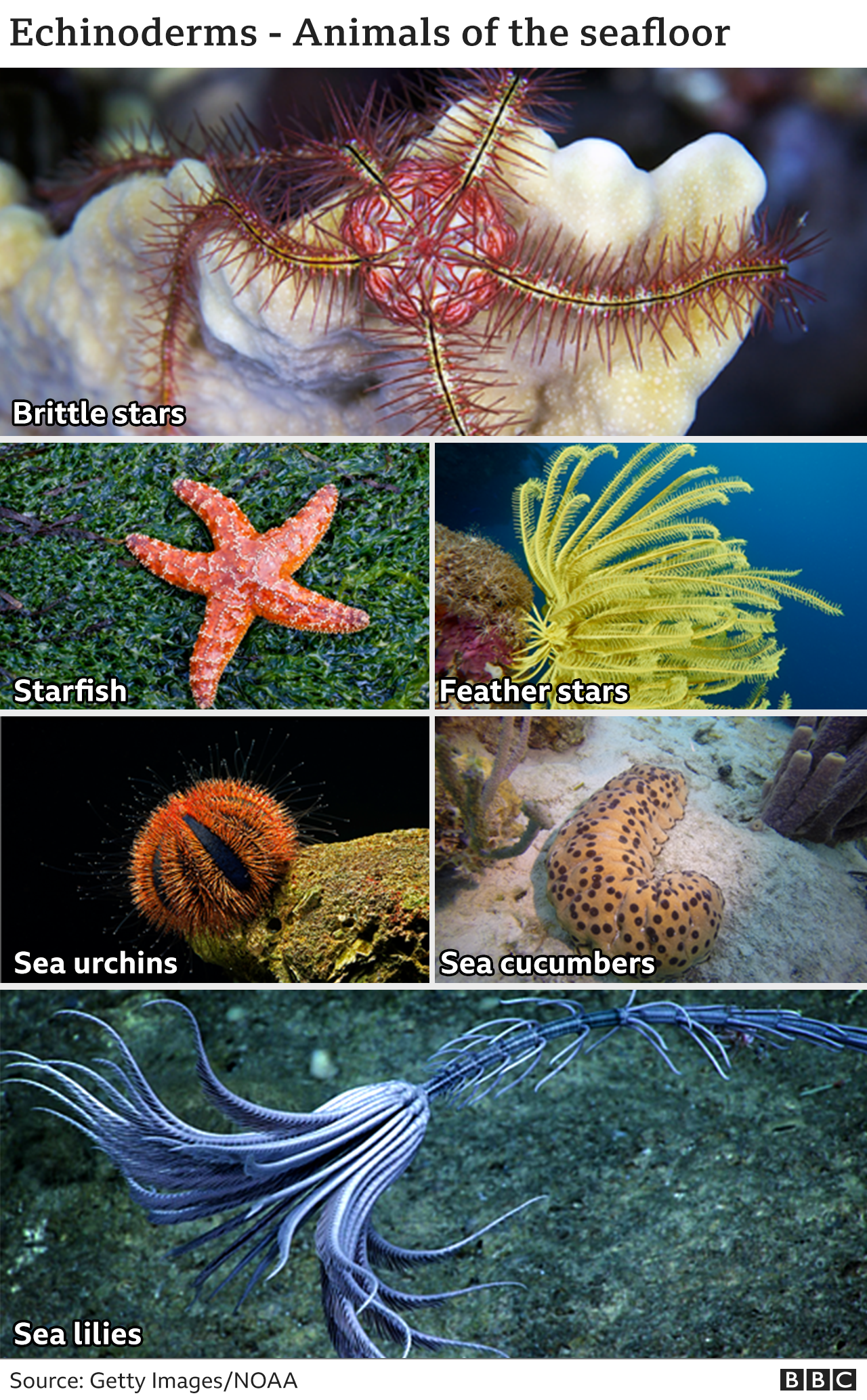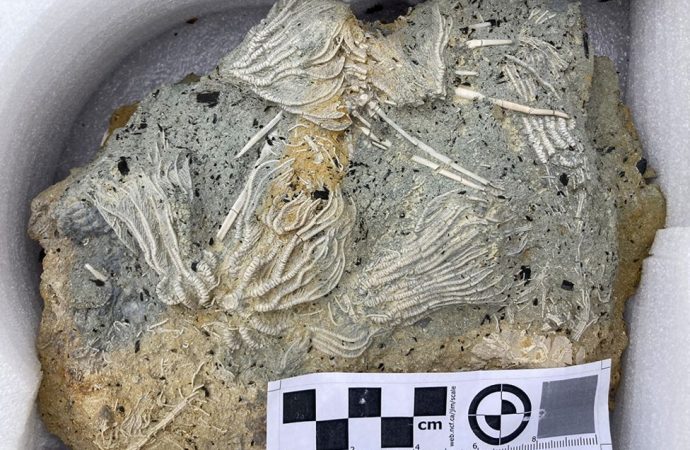“If they could squeal, I’m sure they would have done.”
Source: BBC News
Palaeontologist Tim Ewin is standing in a quarry, recalling the calamity that’s written in the rocks under his mud-caked boots.
“They tried to protect themselves, adopting the stress position of pulling their arms in,” he continues. “But it was all in vain; you can see where their arms got snagged open, right up to the crown. They were pushed into the sediment and buried alive.”
There’s a little smile creeping across Tim’s face, and he’s got reason to be happy.
The misfortune that struck this place 167 million years ago has delivered to him an extraordinary collection of fossil animals in what is unquestionably one of the most important Jurassic dig sites ever discovered in the UK.media captionThe fossils were originally uncovered by two hobby palaeontologists
We can’t be precise about the location of the excavation for security reasons, but you’ll recognise from the gorgeous, honey-coloured limestone that we’re somewhere in Cotswold country.
Things have changed a bit since Jurassic times, though.
No quaint villages and dry-stone walls back then; these parts were covered by a shallow sea, maybe 20-40m deep. And it was a damn sight warmer than your traditional English summer. The movement of tectonic plates means Britain was roughly where North Africa is today.
So you can imagine the types of creatures that would have been living on this ancient, near-tropical seafloor.

Stalked animals called sea lilies were tethered to the bed in great “meadows”. Their free-floating cousins, the feather stars, were ambling by, looking to grab the same particles of food. And down in the sediment, starfish and brittle stars were feeling their way across the bottom with their fives arms, no doubt bumping into the occasional passing sea urchin or sea cucumber.
It’s exactly this scene that’s persevered in the rocks of our mystery quarry.
The quantities involved are astonishing. Not hundreds, not thousands, but perhaps tens of thousands of these animals that scientists collectively call “the echinoderms”. It’s a great name, derived from the Greek for “hedgehog”, or “spiny”, “skin”. What is a sea urchin, if not an “underwater hedgehog”?

- Some may look like plants but they are all animals
- Skeletons are made from calcite (calcium carbonate)
- They display radial symmetry, in multiples of five
- They have no brain but do have a nervous system
- Arms and tube feet are moved by pumping seawater
- Lost parts can be regrown, much like a gecko’s tail
Source: BBC News

































Leave a Comment
You must be logged in to post a comment.